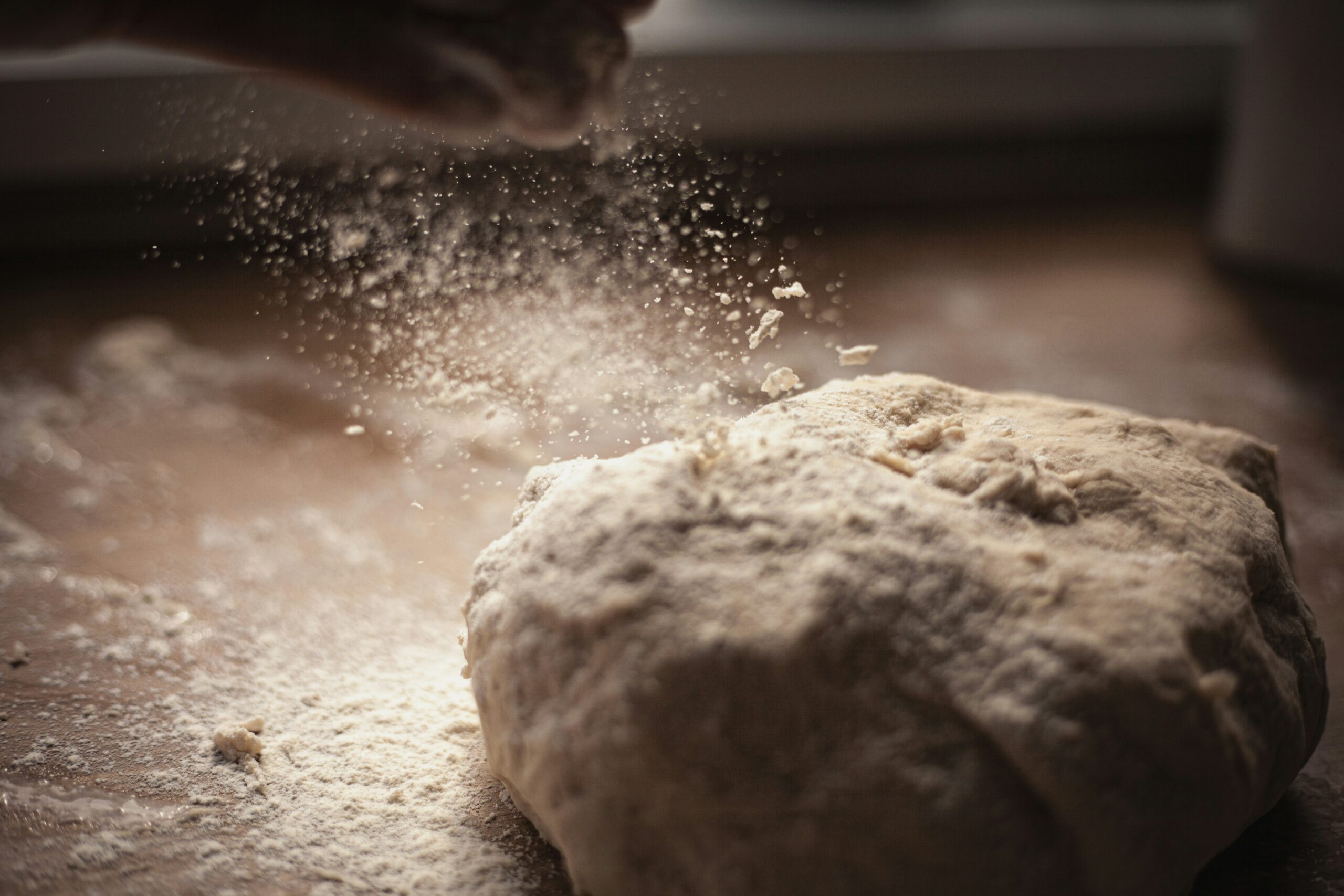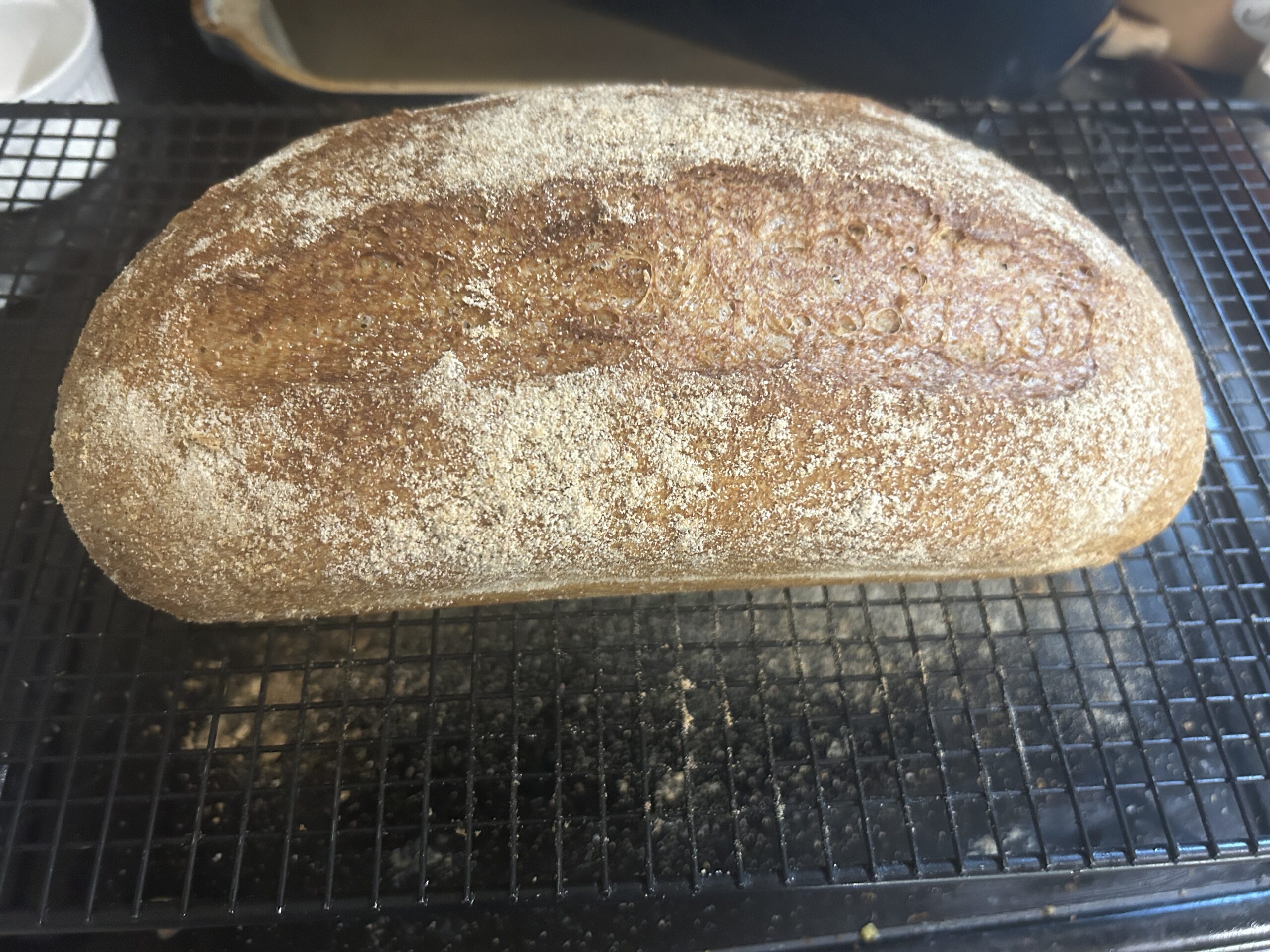Punching down the dough and scaling are both done after fermentation. Why? Well, we need to relax the gluten, remove the air from the inside, and balance out the dough temperature. Bubbles need to be released from the dough at this point because they will become giant holes in your bread once it’s done baking – and we don’t usually want that. If you DO want giant holes in your bread, skip the punch down. As for scaling, it’s just a fancy word for dividing your dough into balls for each item you bake.
Punching Down Techniques
Recommended technique:
Stretch the dough up from one side, and over the center of the dough, and then
press down. Turn the bowl 1/4, and do it again until you get all 4 sides. Then flip the dough upside down in the bowl. This is the way we punch down the dough.
Common technique:
Dump the dough out onto the counter, and literally punch it with your fist, then
gently re-shape it into a ball. I’ve even seen some folks just do a quick run of their mixer (like pulse on a blender) to knock all the air out of the dough, and then shape it into a ball and move on. Your kitchen, your rules.
Scaling the Dough
After punching down the dough comes scaling. Also known as dividing the dough, scaling is the beginning stage of shaping, where we determine what size pan to use. If the pan is too small, it will flow up over the top and mushroom out. If the pan is too big, the dough won’t rise high enough, resulting in a short loaf.
Scaling is where we divide one dough ball into one ball for each shaped item we will make.
Without a Scale:
We can shape the dough into a loaf, and see which pan it fits best. If the loaf
doesn’t come close to filling half the pan, choose a slightly smaller one. If the dough is filling more than half the pan, grab a slightly bigger pan. You also have the option of cutting the dough into different sizes, and making one larger loaf and one mini loaf if you like. If scaling rolls, or example, divide the dough into halves, thirds or quarters before doing the same again to each section – until you have the number of dough balls needed. For example, to make 9 rolls divide the dough ball into thirds. Then divide each third into three for 9 rolls.
With a Scale:
Weigh your dough ball. Choose your pan based on the weight of your dough.
Choose pan closest to your dough’s weight, or cut the dough to match the pan size, and make flatbread with the extra. Bonus bread! If scaling for rolls, pretzels or bagels you will divide your dough by the number of rolls you want if you don’t care about the size. If
you do care, divide the dough weight by the size you want in grams, and that’s how many you will cut.
Average Bread Pan and Roll Sizes
Pullman 13 x 4 x 4 (1.5 lb loaf) – 1100 – 1200 g
Pullman 9 x 4 x 4 (1.5 lb loaf) – 800 – 950 g
Standard 9 x 5 pan – 800 – 950 g
Pullman 8 x 4 x 4 (1 lb) – 685 – 750 g
Standard 8 x 4 x 2.5 inch (¾ lb) – 430 – 675 g
Standard mini-loaf pan – 200 – 275 g
Hot dog rolls – 80 g per roll
Hamburger rolls – 90 g small, 100 g medium, 120 g large
Hoagie/Sub rolls – 150 g small, 250 g large
Work quickly when you are scaling your dough, especially if it is enriched.
Remember the dough continues to go through fermentation until the yeast
dies during the bake.
What is my dough is too wet?
If it’s only a little sticky, you can oil the board and your hands, as well as the scale during this stage and shaping.
When the dough is too wet for oiling, you can add just enough flour to make the dough manageable during this stage. If it’s very wet, add just enough flour to make it workable with oiled hands and board. Adding too much flour will give you dry or dense bread, and many bread doughs are MEANT to be very wet and harder to handle.
Join Our Community
Connect with fellow bread enthusiasts in the “Milling Fresh Flour with Lovely Bell and Dr. Mel” community. Gain insights, troubleshooting tips, and personalized guidance for baking with freshly milled flour. Embrace the journey of artisanal bread making with support from a vibrant community dedicated to mastering the art of bread.
Next up: Shaping Fresh Milled Bread Dough



